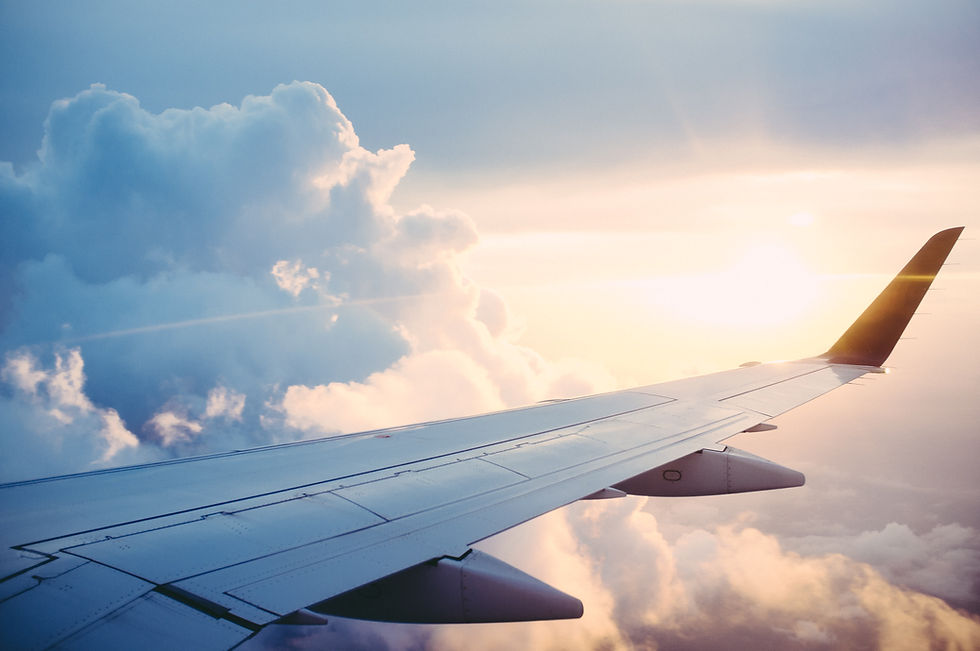The Race to Reduce Emissions
- Michelle Klieger

- Aug 20, 2024
- 3 min read

Consumers Absorb Costs as Airline Ticket Prices Rise
Lufthansa, the German airline company, says their passengers will be seeing a price increase on flights; as much as $77 in some cases. The airline, like others around the globe, is working to drastically reduce carbon emissions in a relatively short amount of time. Sustainable Aviation Fuel (SAF) made from feedstocks and used cooking oil has the potential to decrease emissions by 80% making its development a top priority on an international level. However, the transition process has proved to be an expensive one and airline companies have been preparing passengers for the day they too would have to absorb some of the costs associated with reducing emissions.
That day is here, and Lufthansa’s announcement concerning price increases prompts a few questions about the methods used to usher in the carbon free era. Will their customers be willing to pay higher prices for the sake of reducing emissions, or will the domino effect of EU quotas hitting consumer pockets slow the carbon reduction process for the airline industry?
Sustainable Aviation Fuel from a Consumer Perspective
A high percentage of the EU population are concerned with the effects of carbon emissions and are willing to support land reclamation efforts like tree planting initiatives and even purchase fewer single-use plastic items. However, a far smaller percentage of people are willing to drastically change their lifestyle. Purchasing new vehicles, eating less meat, paying out of pocket for home upgrades, and paying more for airfare were all shifts that the majority of people were not willing to make.
Will consumers propel green energy movements forward or will companies? Currently, SAF is a high ticket item. High prices spark innovation, which is incentivizing airline companies to fund sustainable fuel research projects and the development of methods and facilities for producing the fuel. Now, they must also purchase the 3-5 times more expensive fuel option in order to meet government quotas. If consumers don’t take on some of the cost burden then biofuel use will have a tough time getting fully off the ground.
Lufthansa saw record travel numbers in the first quarter of 2024, a price increase could certainly give passengers pause. If customers opt not to fly then emissions would reduce somewhat simply because less people would be utilizing air travel. Lower travel means less fuel demand, which could soften aviation fuel prices. We don’t know how consumer spending habits will play in stabilizing sustainable fuel options. The goal is to funnel dollars into projects that continue to streamline production processes so that SAF fuel is cheaper in the future, but if consumers are unwilling to put their money here, will it slow the projects down?
Fossil Fuel Pricing
Fossil fuels are still cheaper than biofuels which makes Lufthansa’s move an experiment in the values of the general public or insurance against future regulations that require sustainable fuel use. Policy decisions could add to the price of fossil fuels and still create funding for the development of diverse biofuel options produced closer to where they are needed. If fossil fuels went up in price to offset emissions to fund things like forestry projects would the consumer perspective shift?
Currently the cost difference between biofuels and fossil fuels is in the range of $400 to $700 per metric ton. Adding a tax to fossil fuels could close the gap and build a more level playing field. But that method forces us to put a price on carbon, something there are not universal methods for in the airline industry.
In inflated economies, consumers might be filtering decisions through their current bank account numbers rather than CO2 emissions a decade from now. For Lufthansa, coming off a great quarter, it looks like a good time to introduce new ticket prices, but how long will customers be willing to absorb SAF prices?




Comments